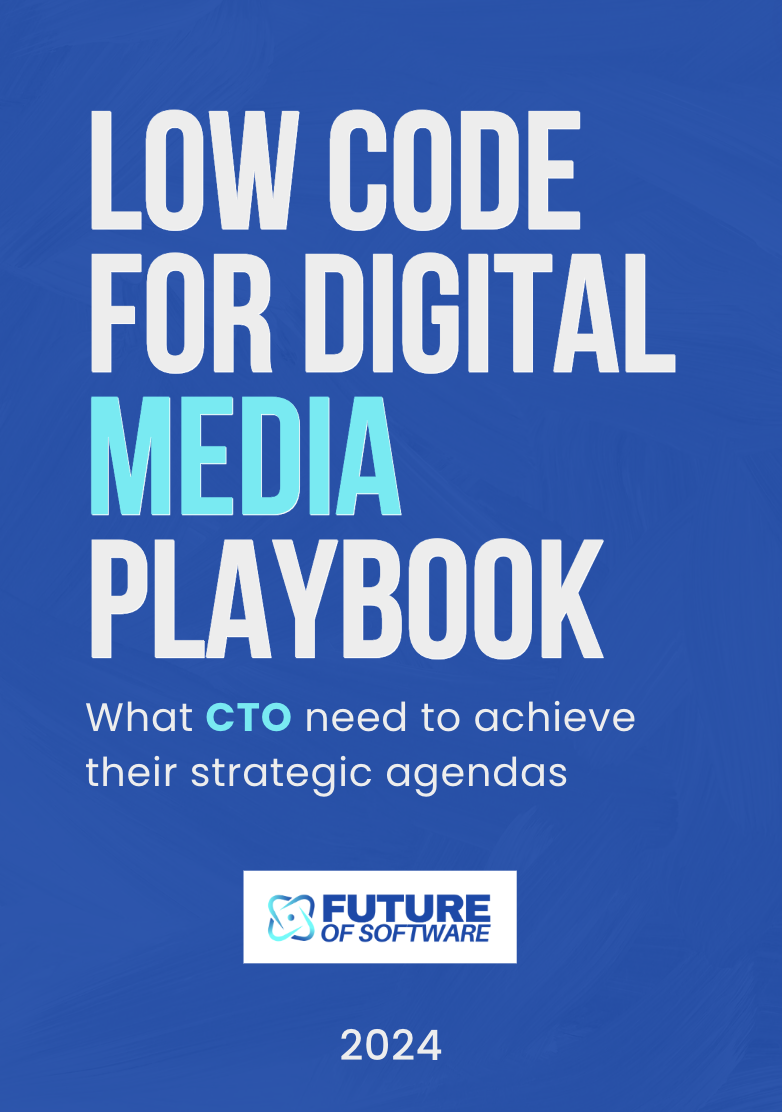
Understanding Headless CMS
Why Headless CMS is a Game-Changer
Imagine running an online store where the content management system (CMS) lets you manage how users see your products on any device—without being stuck with one template. That's the magic of a headless CMS. It's like having a CMS that keeps the nuts and bolts of content management invisible to the users, while you get to focus on delivering a sterling customer experience. Headless simply means separating the frontend from the backend. You have the content stored in the backend and can use an API to display it anywhere—in apps, websites, smart devices—whatever connects with the customer. This setup breaks away from the traditional, rigid ecommerce platforms and allows for creativity. A traditional CMS binds content and presentation together, making it trickier to adapt to different devices and user needs. Headless turns this around, opening the door to endless options and creating room for you to be flexible. Ecommerce businesses are picking up on this and opting for a headless architecture—stepping into a space where they can engage better and push more unique content as their strategies evolve. Curious about whether this shift could make or break your business? You'll want to read more about choosing between traditional and headless CMS to get a handle on what suits your strategy best. Just think about the limitless potential of your online store, unshackled to align perfectly with your vision, reaching customers where they are. As we move into the subsequent parts of this article, you'll discover how headless systems are steering modern commerce and hear stories of companies who've successfully jumped on board.The Rise of Headless CMS in E-commerce
The Popularity Surge of Headless Systems in E-commerce
In the last few years, e-commerce platforms have eagerly adopted the headless architecture. As businesses seek innovative ways to enhance customer experience, a headless setup offers flexibility like no other. Gone are the rigid limitations of traditional systems. Instead, retailers now enjoy newfound freedom to innovate in ways that were previously unimaginable with conventional setups. As more companies explore headless commerce, the benefits begin to shine brighter. Our daily lives are intertwined with technology, and customers demand seamless interactions with their favorite online store. This is where headless CMS comes into play. With its ability to decouple frontend from backend, retailers can craft unique user experiences without being tethered to a single platform. Those who jump on this train of headless commerce are witnessing powerful transformations. From small online boutiques to large-scale e-commerce giants, everyone is keen to leverage these new capabilities. They see headless systems as a way to revamp their commerce platform strategies and offer personalized experiences to their audiences. More information can be found on how to make the right choice for your own business through choosing the best headless CMS for your eCommerce business. Seeking resources like this not only informs but empowers businesses to make informed decisions, keeping customer satisfaction at the heart of their brand. As you look to the future of headless ecommerce, it’s clear that its rise in popularity speaks volumes about the yearning for change in the e-commerce sector. With a headless approach, the possibilities for innovation and growth are boundless. Retailers who adapt are ahead of the game, catering to customer needs and carving their path to success. By observing these trends and adopting a headless content management system, you position yourself for better scalability, performance, and ultimately, profitability.Benefits of Headless CMS for Online Retailers
Opting for a headless CMS solution can unleash a wave of advantages for online retailers—it's like finding the perfect platform to empower your digital strategy. Dive into the rising trend of headless ecommerce and you'll notice how businesses benefit from its unique architecture to cater to evolving customer demands.
Seamless Customization and Flexibility
In the hustle of content-heavy ecommerce environments, a headless CMS is a breath of fresh air. Unlike traditional systems, the decoupled frontend and backend allow businesses to juggle multiple sales channels effortlessly. Break free from the chains of restriction that often come with traditional ecommerce setups, and boost your business agility with the slick APIs in play.
Your online store can make use of this freedom to adapt, innovate, and interact seamlessly across various devices and platforms. This flexibility in a headless approach hands power back to businesses, helping them mold their customer experience to really pack a punch.
Transforming Customer Interactions
Today's shoppers yearn for consistent and engaging experiences; the disjointed vibes of the past are old news. An ecommerce CMS with headless capabilities ensures that content can flow freely across all platforms, serving up seamless engagements, on every touchpoint. Besides the captivating frontends it enables, the efficiency of content updates across multiple stores is a win-win.
Accelerated Innovation and Scalability
Want to keep pace with consumer expectations or beat competitors to the punch with new features? Headless architecture is your ticket. With open-source tools and third-party integrations readily available, businesses have the breathing room to move fast, adding capabilities as they go along. Expand without skipping a beat by scaling effortlessly with your growing business needs.
Undoubtedly, adopting a headless CMS isn't all roses and rainbows. It requires thoughtful consideration, like weighing initial costs, integration challenges, and navigating the intricacies of API management. However, for businesses aiming to thrive in a commerce platform that demands agility and outstanding user experience, the benefits speak volumes. For more insights on the integration of AI in software creation, explore our AI-powered software creation insights.
Challenges and Considerations
Overcoming Hurdles in the Headless CMS Journey
Now, let's get down to the nitty-gritty. While headless CMS brings a bucket full of advantages to the e-commerce party, it ain't all sunshine and rainbows. There's some real stuff to tackle - it's not just a flick of a switch! It's true, headless architecture can shake things up, but boy, can it require some hustle. Businesses need a well-oiled team or trusted partners to keep all engines running. This setup demands both backend and frontend expertise, 'cause decoupling content from the imposing monolith means stitching it back together seamlessly using modern frontend frameworks with APIs. And let me tell you, finding the right talent or partners isn't always a walk in the park. Oh, then there's system integration. Traditional CMS platforms typically come as the full package deal, you know? In contrast, headless systems demand a bit more of a mix-and-match approach. Bringing together third-party tools like e-commerce platforms, personalization engines, and marketing platforms can be overwhelming – especially when you're trying to maintain that smooth, unified customer experience. Don't forget about security! After all, you're opening your precious online store to more APIs than before. Each one needs shielding to prevent breaches, and businesses need to stay alert to potential threats. Budget is another factor. Transitioning from traditional to headless CMS or embarking on a greenfield headless commerce project can come with hefty price tags. It's essential for online retailers to weigh this initial investment against long-term benefits, considering both the current business state and future aspirations. And let's not overlook cultural shifts within an organization. Adopting headless commerce requires a shift in mindset. Teams need to pivot from old habits of traditional ecommerce platforms to adopting, and even thriving in, an agile, API-first environment. This transition can stir up quite a change in daily workflows, team structures, and management systems. In a nutshell, diving headfirst into headless isn't for the faint-hearted. Careful planning, smart partners, and a bit of patience can pave the way to a successful leap into the future of commerce. That's the ticket, folks!Case Studies: Success Stories
Real-World Wins: Headless CMS in Action
In the bustling world of ecommerce, businesses are always on the lookout for ways to enhance the customer experience and streamline operations. Enter the headless CMS—a game-changer for many online retailers. Let's take a closer look at some real-world success stories that showcase the power of this innovative approach.
Retailer Success with Headless Architecture
One notable example is a popular fashion retailer that shifted from a traditional ecommerce platform to a headless architecture. By decoupling the frontend from the backend, they were able to deliver personalized content faster and more efficiently. This change not only improved their customer engagement but also reduced cart abandonment rates significantly.
Streamlined Operations for a Global Brand
A global electronics brand faced challenges with their existing CMS, which couldn't keep up with the demand for localized content across different regions. Switching to a headless CMS allowed them to manage content centrally while providing tailored experiences for each market. The result? A seamless, consistent brand experience worldwide and a noticeable uptick in customer satisfaction.
API-Driven Flexibility for a Growing Startup
A tech-savvy startup in the health and wellness sector leveraged the flexibility of headless commerce to integrate with third-party services easily. Their ability to quickly adapt and innovate using APIs gave them a competitive edge, allowing them to expand their product offerings and reach new audiences without the constraints of a traditional ecommerce CMS.
Boosting Performance with Headless Commerce
An online store specializing in custom home goods turned to headless ecommerce to address performance issues. By separating their content management from the presentation layer, they achieved faster load times and improved their site's overall performance. This technical enhancement translated into a better user experience and increased conversion rates.
These stories highlight the tangible benefits of adopting a headless CMS for ecommerce platforms. Whether it's improving speed, flexibility, or customer engagement, the results speak for themselves. For businesses willing to embrace change, the potential rewards are immense.
Future Trends and Predictions
Peeking into the Future of Headless Commerce
The future of headless CMS in ecommerce is as exciting as a kid in a candy store. Businesses are already seeing the benefits of separating the frontend and backend with headless architecture, but what's next on the horizon?
More Personalization and Customization
One thing's for sure, customers are craving personalized experiences. Headless systems are stepping up to the plate by allowing businesses to tailor every interaction. Imagine walking into an online store where everything feels like it was made just for you. That's the power of headless commerce. As APIs become more sophisticated, expect even deeper levels of customization that will make shopping feel personal and unique.
Integration with AI and Machine Learning
AI isn't just a buzzword; it's becoming a staple in the ecommerce platform toolkit. By integrating AI with headless CMS, commerce platforms can predict what customers want before they even know it themselves. This means better product recommendations, smarter search functionalities, and a customer experience that's smooth as butter.
Rise of Open Source Solutions
Open source is gaining traction in the content management space, offering flexibility and community-driven innovation. Businesses that adopt open source headless CMS solutions can customize their platform to meet specific needs without being tied down by vendor restrictions. This freedom is a game-changer for those looking to innovate without limits.
Seamless Omnichannel Experiences
With the lines between online and offline shopping blurring, headless architecture is perfectly poised to offer seamless omnichannel experiences. Whether a customer is browsing on a mobile app, desktop, or in a physical store, headless ecommerce ensures a consistent and engaging experience across all touchpoints.
Challenges Ahead
While the future looks bright, it's not without its hurdles. Businesses will need to navigate the complexities of integrating third-party tools and managing multiple APIs. The transition from traditional ecommerce systems to headless models requires careful planning and execution. But for those who take the leap, the rewards can be substantial.
As we look ahead, it's clear that headless CMS is not just a trend but a fundamental shift in how content and commerce are managed. The future is here, and it's headless.















